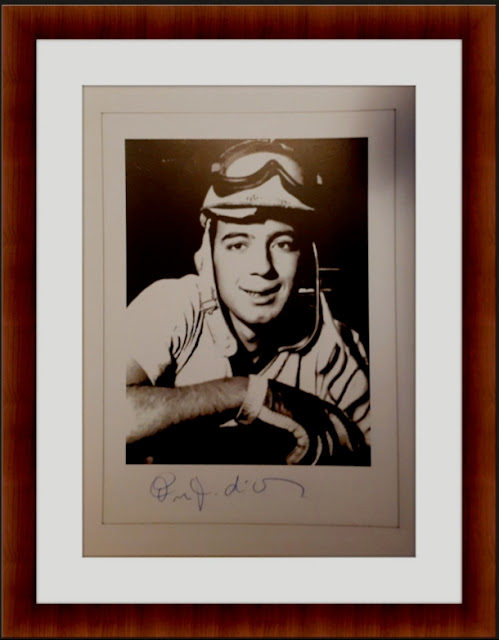 Frederico José Carlos Themudo "Fritz" d'Orey (born March 25, 1938 in São
Paulo) is a former racing driver, from Brazil. He participated in three
Formula One World Championship Grands Prix, debuting on July 5, 1959.
Frederico José Carlos Themudo "Fritz" d'Orey (born March 25, 1938 in São
Paulo) is a former racing driver, from Brazil. He participated in three
Formula One World Championship Grands Prix, debuting on July 5, 1959.Although he was Brazilian by birth, Fritz d’Orey’s parents were Portugues nationals and his grandfather a German. The family settled in São Paulo where they earned a more than comfortable living by importing Packard cars from America. Fritz wanted for nothing, and what he wanted was to go racing.
 That was with a Porsche initially before the 20 year
old bought Chico Landi’s Ferrari 375 that was now fitted with a V8
Corvette engine. Victory in the Interlagos endurance race of 1958 and
further national success persuaded d’Orey to race in Europe.
That was with a Porsche initially before the 20 year
old bought Chico Landi’s Ferrari 375 that was now fitted with a V8
Corvette engine. Victory in the Interlagos endurance race of 1958 and
further national success persuaded d’Orey to race in Europe.Formula 1 career with Centro Sud and Tec-Mec
 He
joined Scuderia Centro Sud for the following season and his Maserati
250F was 10th at the 1959 French Grand Prix. The youngster was wild and
ragged and a heavy crash during the subsequent British GP ended his
immediate plans.
He
joined Scuderia Centro Sud for the following season and his Maserati
250F was 10th at the 1959 French Grand Prix. The youngster was wild and
ragged and a heavy crash during the subsequent British GP ended his
immediate plans. D’Orey also competed in hillclimbs, sports car
races and Formula Junior events during 1959. He won an FJ race at
Messina and was second in the United States GP support race at Sebring.
D’Orey also made his third and final GP start that day with Camoradi
USA’s Tec-Mec F415 – a strangely modified Maserati 250F whose reshaped
body certainly made the car no quicker. D’Orey retired early on in what
was Tec-Mec’s only Formula 1 appearance.
D’Orey also competed in hillclimbs, sports car
races and Formula Junior events during 1959. He won an FJ race at
Messina and was second in the United States GP support race at Sebring.
D’Orey also made his third and final GP start that day with Camoradi
USA’s Tec-Mec F415 – a strangely modified Maserati 250F whose reshaped
body certainly made the car no quicker. D’Orey retired early on in what
was Tec-Mec’s only Formula 1 appearance.Instead of open-wheel racing, the Brazilian planned a season in sports cars in 1960. He finished sixth in the Sebring 12 Hours with William Sturgis’s Ferrari 250GT but then crashed while testing before the Le Mans 24 Hours. D’Orey suffered severe head injuries in the accident and was hospitalised for eight months. Although he recovered fully, he was finished with racing. Instead he returned to work for his father’s business and eventually settled in Rio de Janeiro.


